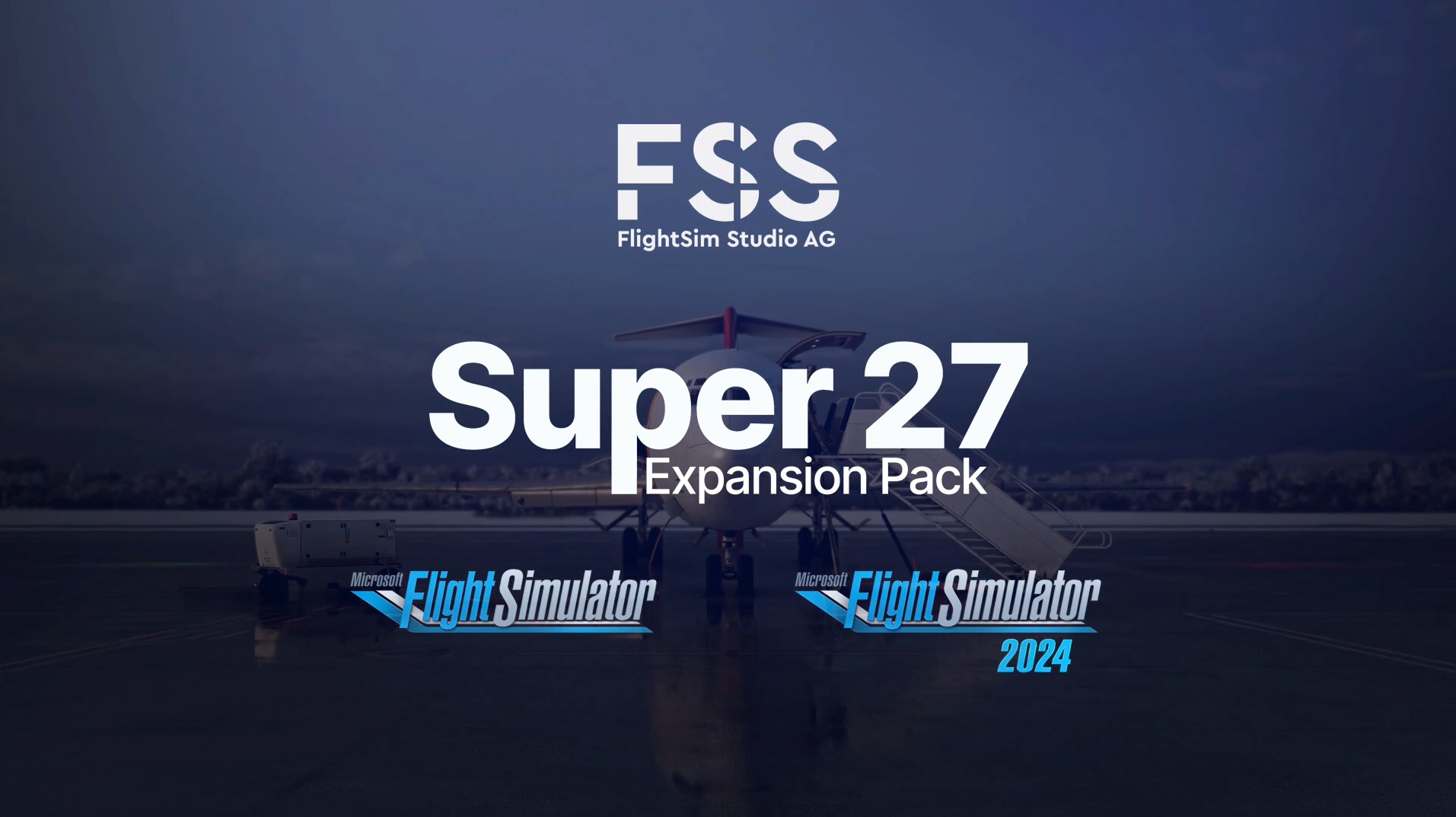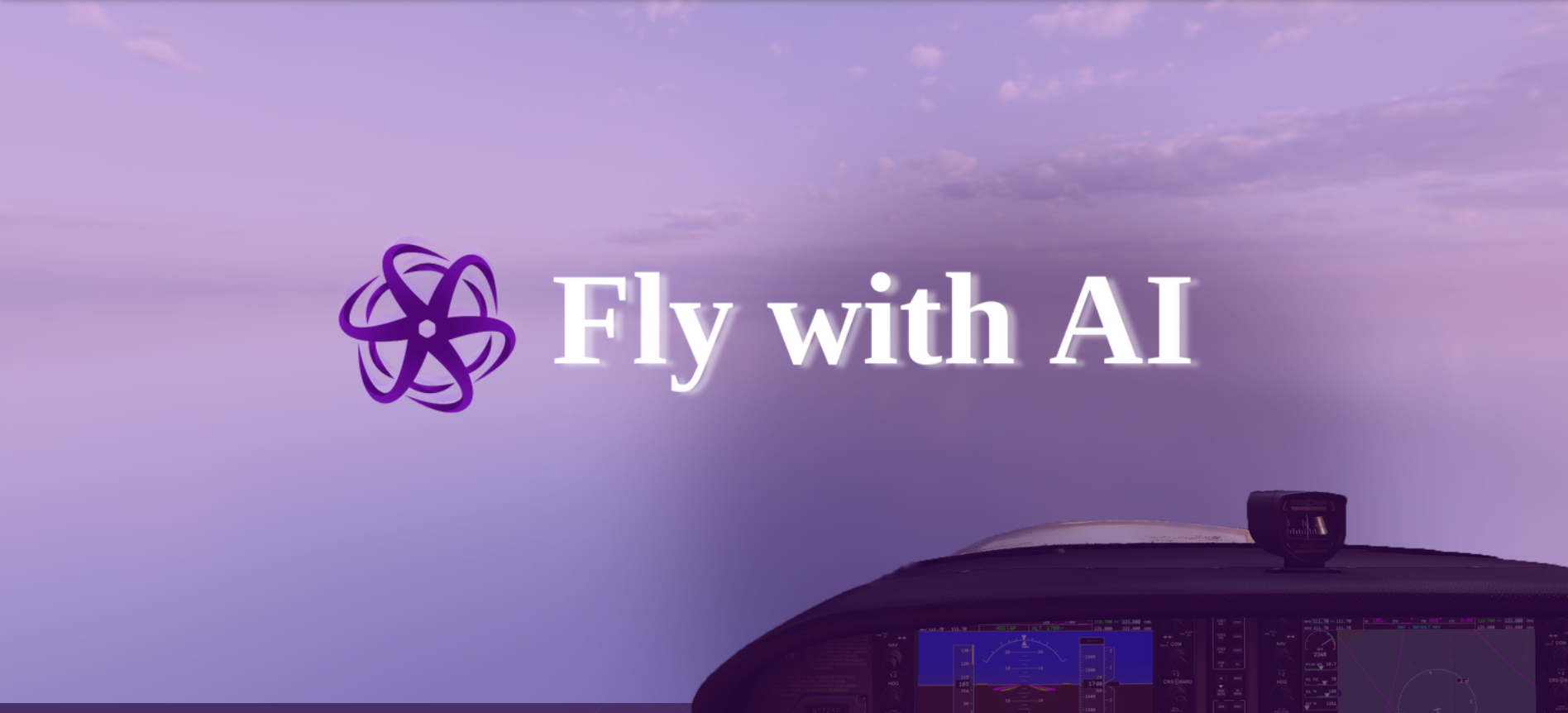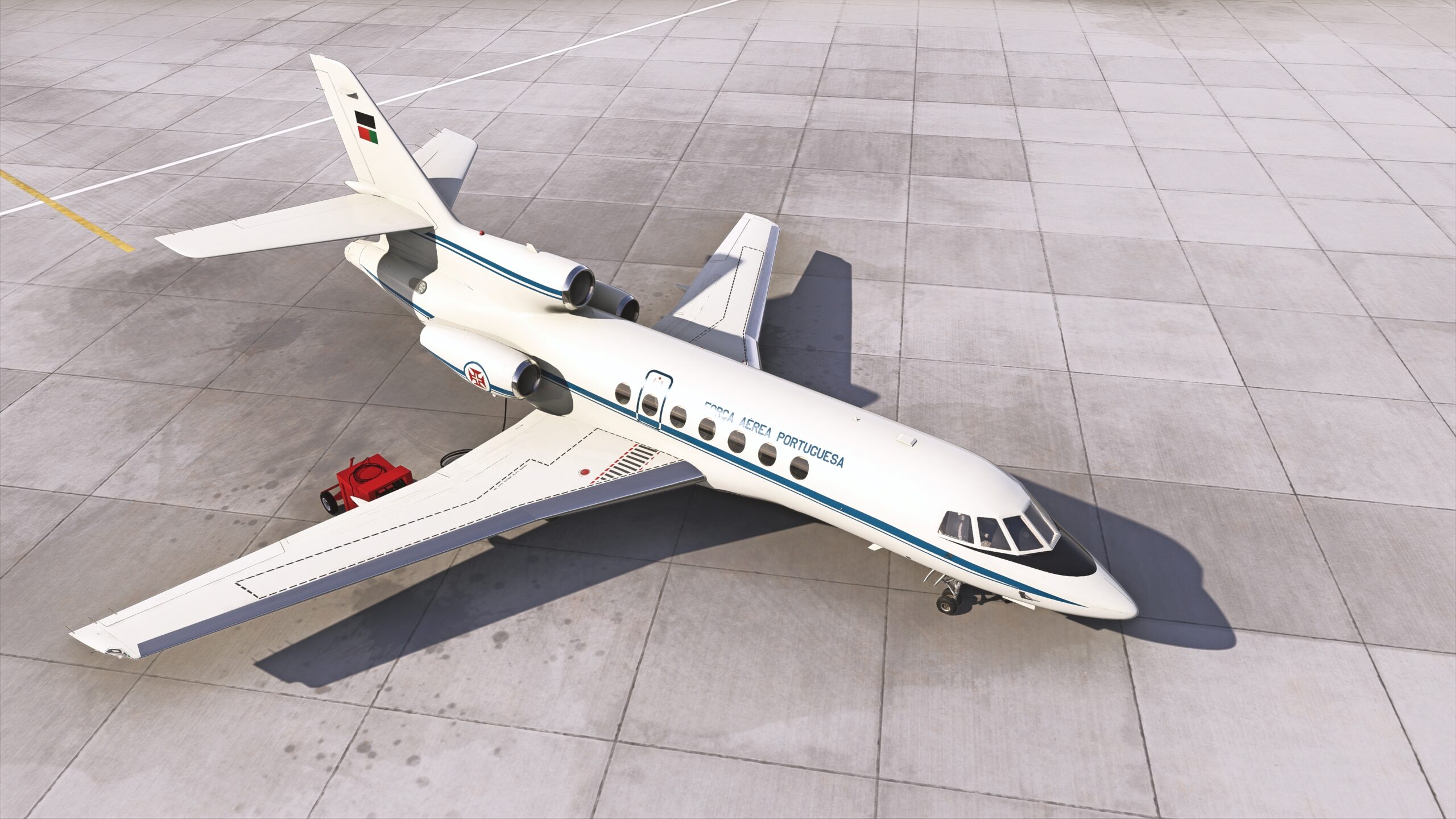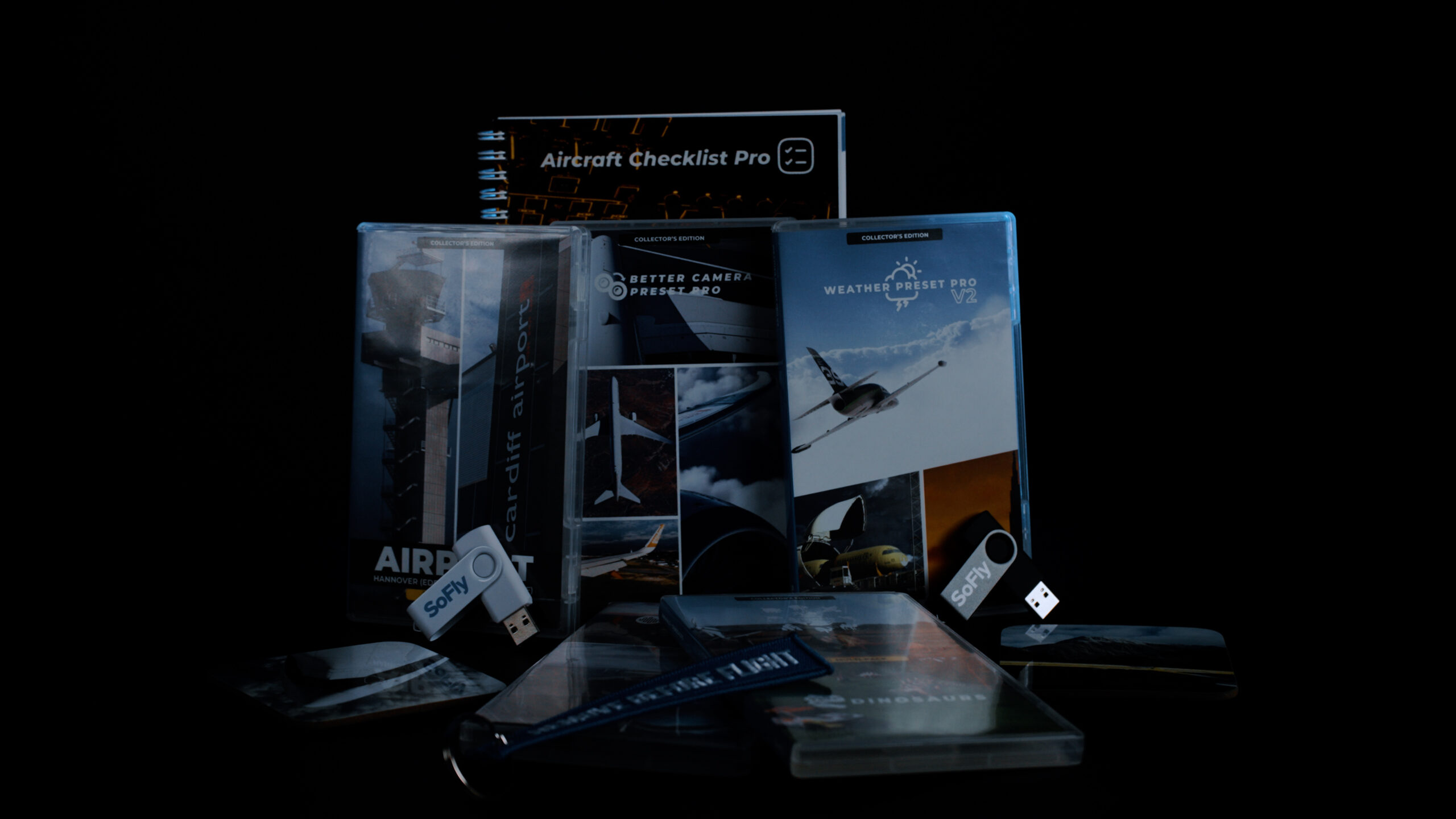FSAcademy INTERCEPTOR is a new mission pack for Microsoft Flight Simulator 2024 that aims to teach you the basics of Instrument Flight Rules (IFR). The course pairs you with a fully-voiced flight instructor and guides you step-by-step through all the techniques required to become a proficient instrument pilot in the simulator. Today, I review FSAcademy’s “next generation” class, which integrates fully into the new simulator to guide you thoroughly and personally. By the time you’re done, you will be a better IFR pilot.
FSAcademy has been making flight sim lesson packs for years, but this is my first experience with their products. Approaching this review from the perspective of a General Aviation pilot and Advanced/Instrument Ground Instructor, there are some items in this course that FSAcademy has, without reservation, knocked clean out of the park. The class has a couple of minor stumbles, but these stem from underlying sim issues, and the only place where I feel it misses the mark is that of missed opportunities.
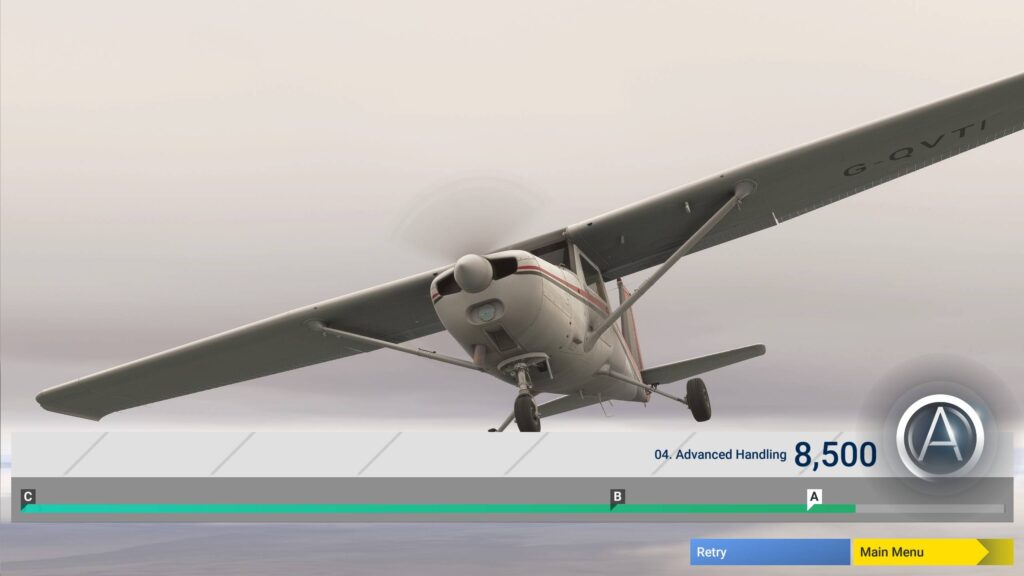
Review Setup and Context
I reviewed FSAcademy INTERCEPTOR on a PC copy of Microsoft Flight Simulator 2024 using a high-end computer. I am an instrument-rated private pilot and commercial pilot candidate and hold AGI/IGI (Advanced/Instrument Ground Instructor) certificates as well. I am licensed in the USA, and there are some things that we do slightly differently in FAA-land than they do “across the pond” where FSAcademy is based. Some terminology and teaching techniques are slightly different, but whether you fly in the USA or anywhere else in the world, the skills taught by FSAcademy INTERCEPTOR are universal. FSAcademy kindly provided FSNews with a copy of INTERCEPTOR for review, but as always, all opinions herein are my own.
FSAcademy INTERCEPTOR Review: Pricing and Features
FSAcademy INTERCEPTOR is available exclusively through the MSFS 2024 in-game Marketplace for $29.99, excluding any tax. It is not available for MSFS 2020. The mission pack includes 30 training missions, covering a complete IFR curriculum. The essential topics covered include:
- Basic instrument scan patterns
- Attitude flying on instruments using pitch and power
- VOR and NDB navigation, using OBS, HSI, and RMI indicators in both analog and glass cockpits
- Instrumentation failures (Partial Panel) in analog cockpits
- Compass navigation, including compass errors
- Procedure turns, holding patterns, and how to account for wind drift
- ILS, VOR, and NDB approaches
- Circling approaches, including prescribed tracks
- A two-part Instrument Rating Skills Test
Each lesson is fully voiced by David of FSAcademy, with some ATC provided by his wife. David’s narration is nothing short of perfection, with his concise, calming cadence as an excellent companion in the murky skies above the Channel Islands. Subtitles are available and activated from the sim’s menu. The writing, pacing, and narration of each lesson are the three major pillars on which FSAcademy INTERCEPTOR succeeds.
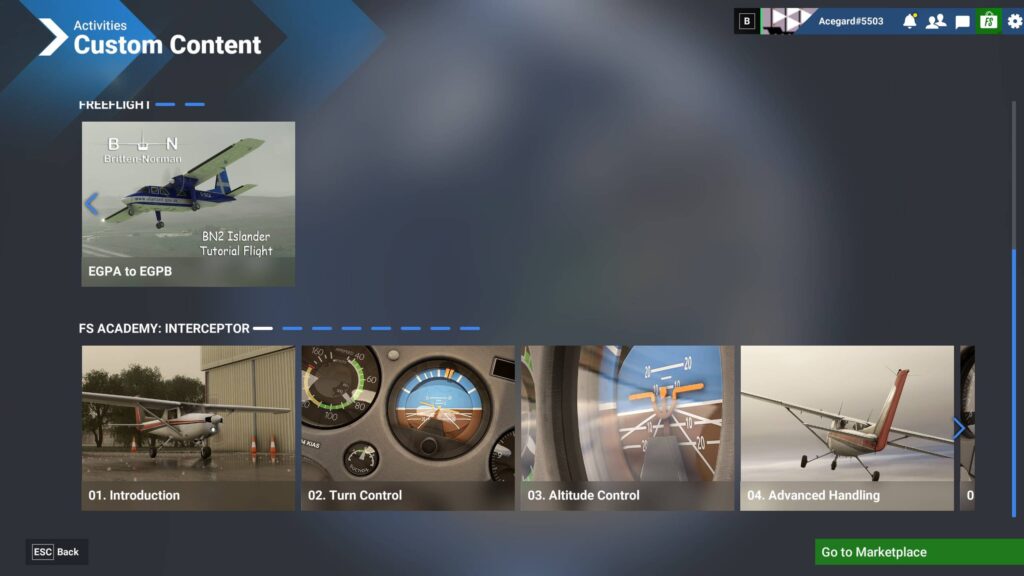
To Read or Not to Read
Previous FSAcademy courses included a downloadable PDF manual, which is no longer included here. Instead, FSAcademy has endeavored to integrate its course into the sim in a deeper and more immersive way, and design each lesson such that a manual is not required. On the support page for INTERCEPTOR, FSAcademy states that “all required knowledge is right there in the sim.”
I think this train of thought is laudable, and FSAcademy has categorically succeeded in ensuring you don’t need to read elsewhere for the basic skills. With no reading required, it’s extremely easy to dive into the early lessons. Instructions are clear and concise, and using the new “mission steps” panel in MSFS 2024 it’s easy to understand what is expected in each lesson. Concise preflight briefing screens precede every lesson, and introductory ground lessons show you around both the analog and glass cockpits before sending you straight into the sky.
However, and touching on FSAcademy’s missed opportunity, I think that a manual could have been extremely useful as a supplement to the main course material. There are aspects of the IFR system that FSAcademy does not explain, and which would be exceedingly difficult to explain without visual aids. More on this in an upcoming section, but I think that FSAcademy should consider publishing a supplement to the course.
Success in the Basics
FSAcademy INTERCEPTOR starts you off in a Cessna 152. The only glass in the cockpit is my spectacles, and this is the perfect platform on which to learn the basics of instrument flying. The first two foundations are the instrument scan and attitude flying, and INTERCEPTOR teaches both of these magnificently.
INTERCEPTOR teaches each maneuver (climbs, descents, and turns) using attitude flying – that is, targeting a certain pitch or bank plus a known power setting to begin a maneuver and adjust from there. Each lesson restates the previous concepts and builds upon them gradually. These early lessons are never more than approximately 15 minutes long and can be taken in bite-sized chunks that do not overwhelm you. You are, after all, in the clouds – and keeping your scan up (especially in an analog cockpit) is surprisingly tiring.
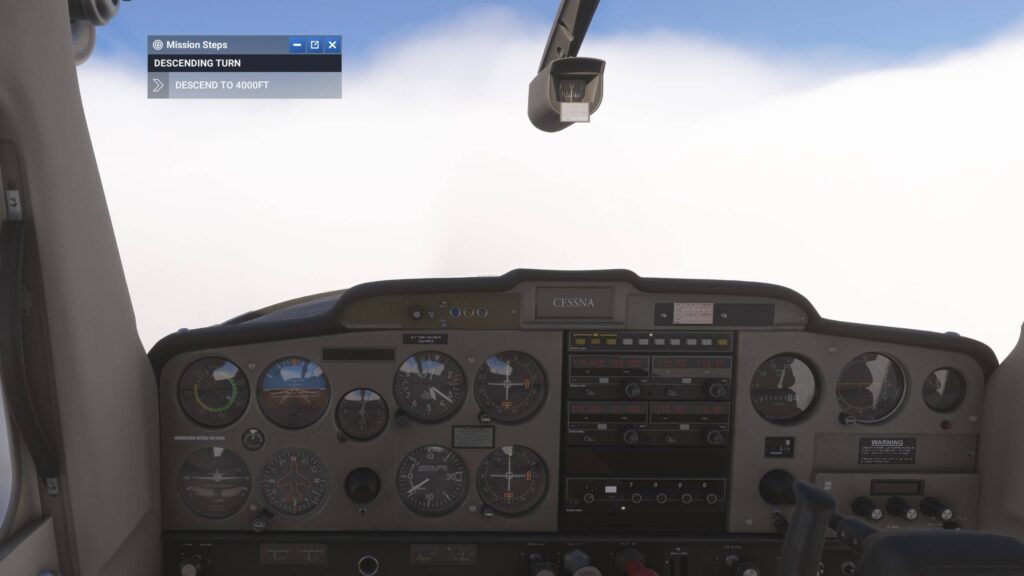
Altering the scan to emphasize certain instruments is taught very well, but human factors and errors in the scan (such as omission and fixation) are omitted entirely – a rare miss in INTERCEPTOR’s otherwise stellar tutelage. I believe it is important for a student to learn to anticipate and recognize these tendencies, and INTERCEPTOR should include them – as well as, perhaps, periodic instructor reminders to keep the scan up.
INTERCEPTOR also does not mention the limitations of certain instruments, such as the lagginess of the VSI. In fact, INTERCEPTOR states that to level off, the correct technique is to zero the VSI. In my experience, that leads to students chasing the VSI, inducing oscillation about the desired altitude. Instead, I find it best to teach to stop the altimeter’s movement as you establish the cruise attitude. The emphasis on attitude flying, especially during the climb, is missing a discussion of speed awareness. Especially at high-density altitudes, it becomes important to target the speed for best rate of climb (Vy) instead of fixating on climb attitude, lest you bleed too much energy from the aircraft.
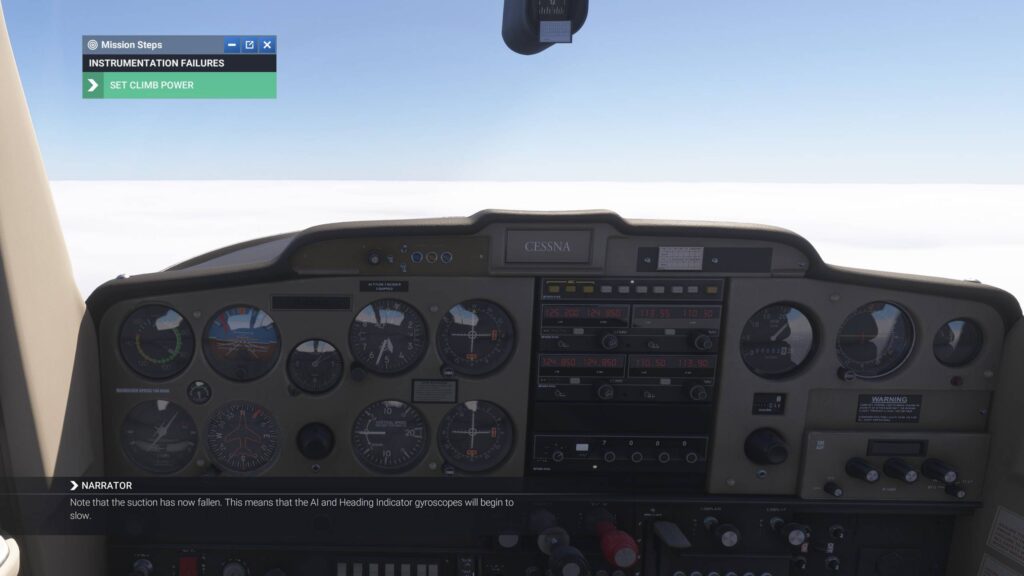
Natural Navigation
The third pillar of IFR flying is navigation, and FSAcademy INTERCEPTOR does a great job of teaching every en route navigational aid – even the NDB (Non-Directional Beacon). That technology has fallen so far out of use in the US that I was never taught how to navigate using them, and there are no more operational NDBs within hundreds of miles of my home airport. INTERCEPTOR, therefore, is my only formal instruction on how to navigate by NDB, and it did an excellent job.
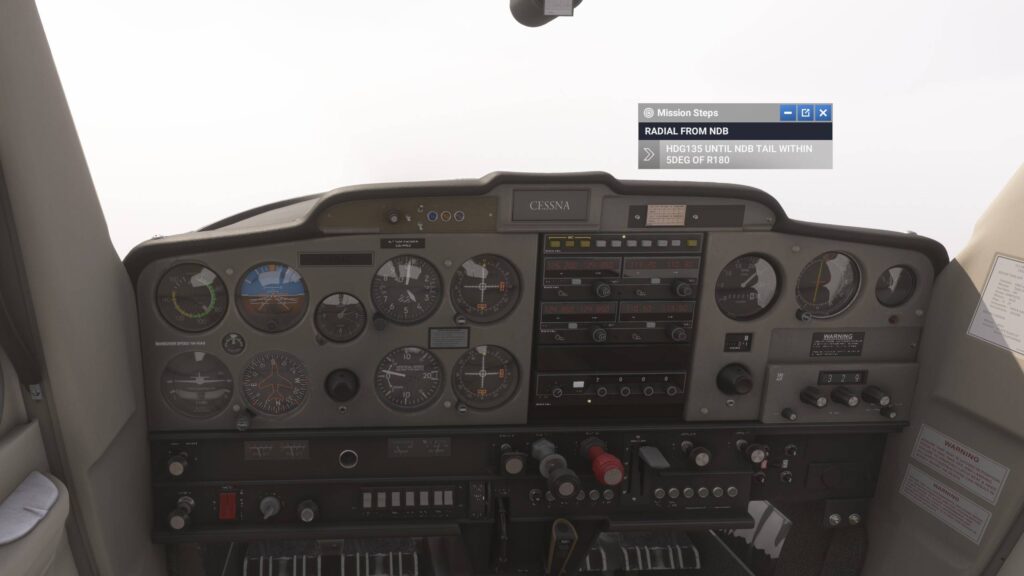
Given that INTERCEPTOR begins in the Cessna 152, most of the course’s emphasis is placed on navigation by radio aids. Approaches, too, emphasise non-precision approaches such as VOR and NDB approaches. ILS is taught but not tested on the “checkride,” and neither is RNAV. In fact, only one lesson covers GNSS (GPS) navigation in any detail. That one lesson is thorough, of course, but covers only GNSS navigation en route and its differences from radio navigation. There is no lesson on RNAV approaches.
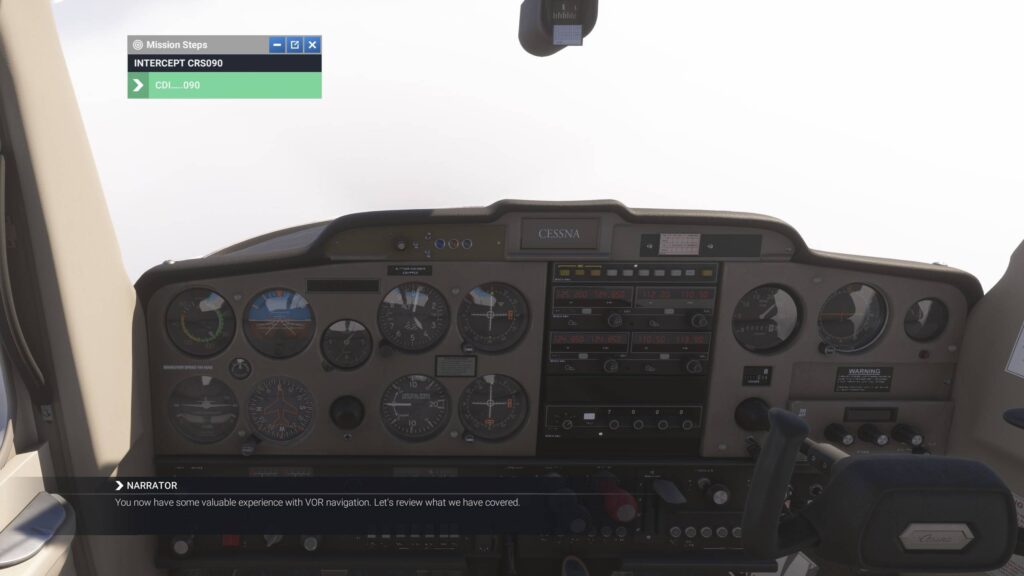
Reverse Sensing, another instrument limitation, is also never discussed during the lessons in the analog cockpit of the Cessna 152. Given that VORs are difficult to visualize spatially, it’s very common for a student to dial in a radial when meaning to dial an inbound course and run afoul of this phenomenon. A short lesson demonstrating reverse sensing errors would be an excellent addition – especially if followed up by a demonstration in the G1000 as to how the HSI eliminates this phenomenon.
INTERCEPTOR does, however, deliver the best demonstration of compass dip errors that I have ever seen – full stop. The magnetic compass is a wild animal in the airplane, and understanding how it reacts to turns is essential because it’s not how you probably expect. While my own IFR training taught me ANDS and UNOS (acronyms you’ll learn when you attend the FSAcademy!), there was never a discussion of how much to anticipate or overshoot turns, nor did the AATD (FAA-certified training simulator) adequately demonstrate these errors (and it’s nigh-impossible to learn anything from the magnetic compass in summer Colorado turbulence).
If you are a CFII, note this: I unreservedly recommend FSAcademy INTERCEPTOR to any of your students with a copy of MSFS2024, because the 20 minutes and $30 they spend on this single lesson will save them hours of study and save you hours of headaches trying to explain and demonstrate them.
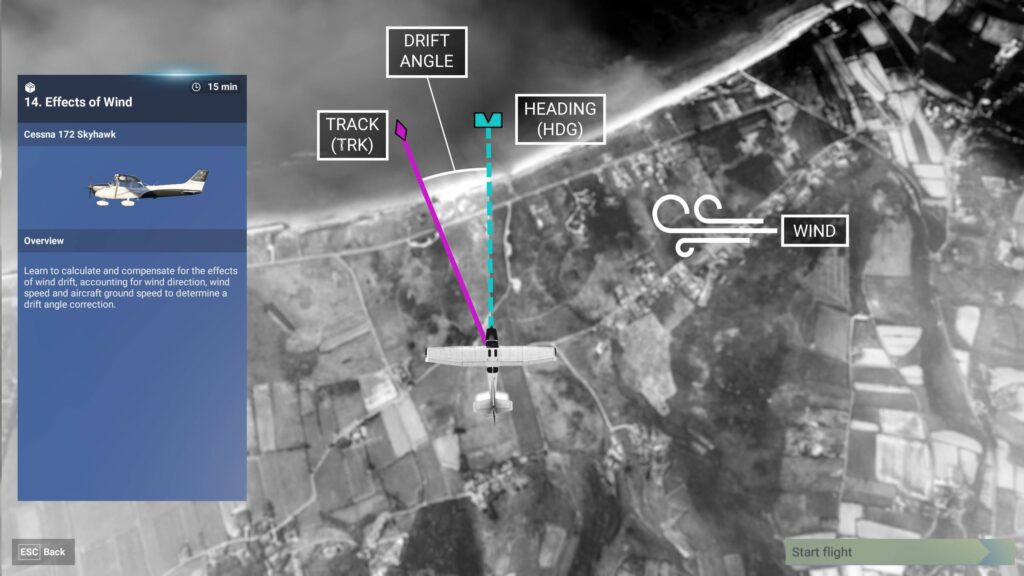
I also must highlight again how well FSAcademy INTERCEPTOR navigates the pacing of its lessons. Their compartmentalized nature makes it easy to retain information without getting bored or tired. I especially like the holding lessons – holding is a tough topic, and one lesson presents you with a randomized holding scenario every time once you’ve learned the basics. It’s a great way to understand holds, and I wish this type of randomly generated lesson was applied to more concepts.
Missing Potential
FSAcademy INTERCEPTOR does a great many things very right, and it does nothing wrong. My only critiques, therefore, are focused primarily on what INTERCEPTOR chooses not to do at all. Most of these are very small (such as instrument limitations discussed earlier), and there are a couple of other choices that I might make differently if I were teaching/designing a program like this from scratch – choices that stem from my personal perspective, not from any failing by FSAcademy. The few bugs I encountered were, after some troubleshooting with the FSAcademy team, all attributable to sim issues or other add-on conflicts.
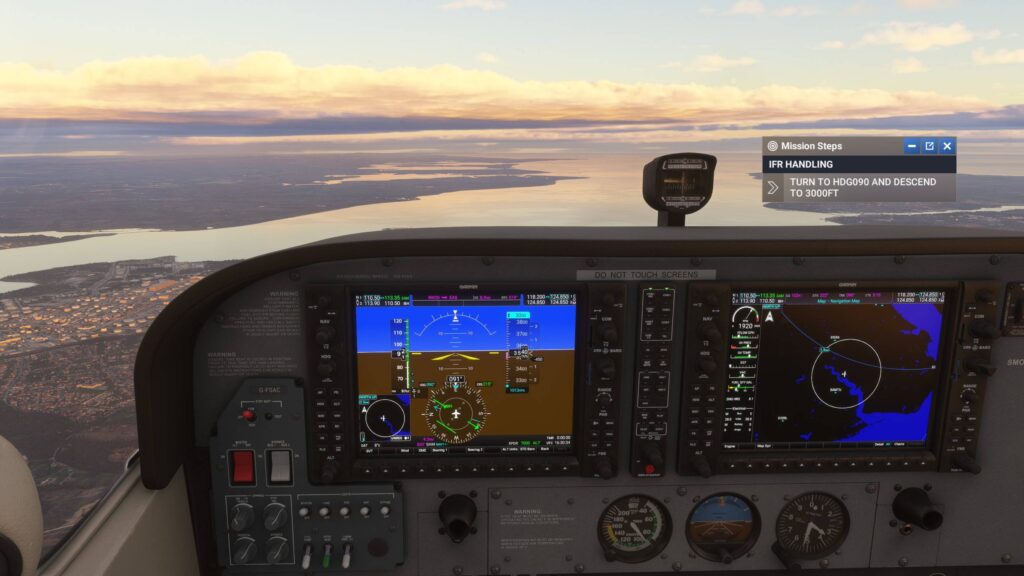
The final exam, for example, is conducted in VMC (Visual Meteorological Conditions). FSAcademy stated that this was because all of the procedures must be flown on instruments anyway, so they elected to fly the exam in a beautiful sunset. In fairness, Instrument checkrides are conducted in VMC for safety, but I think that a true test of skill in the sim would have included the need to fly solely by reference to instruments. I think that more feedback after missions (and especially after the skills test) is a necessary addition as well. I found myself often getting a “B” and a seemingly arbitrary points score with no indication as to what I failed to execute perfectly.

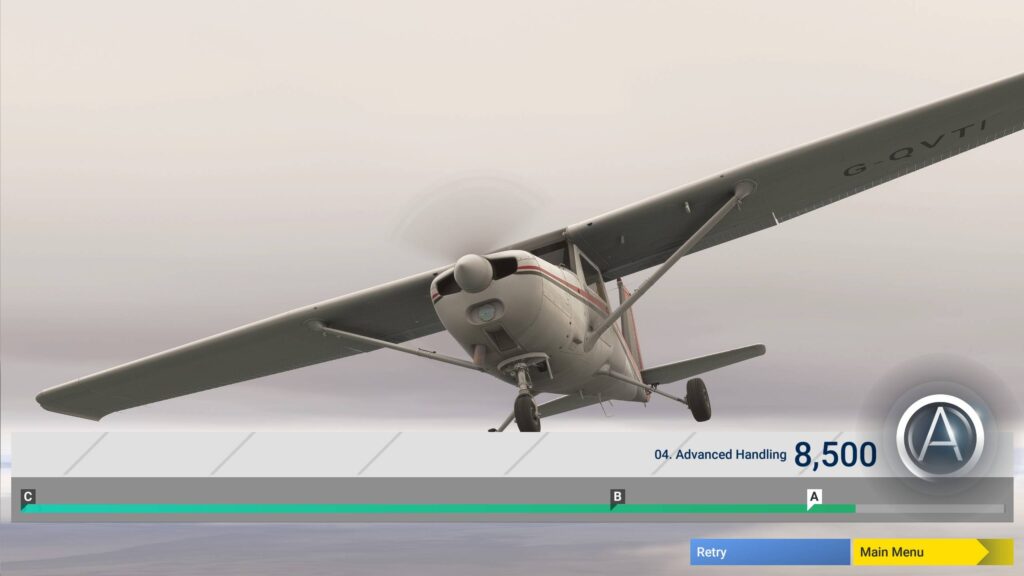
FSAcademy’s largest miss, however, is the total omission of any education involving charts. They do not teach you how to read them, and they do not use charts during any of the lessons. While it isn’t necessary to teach a checkride-level knowledge of IFR charts, understanding them is an essential piece of the IFR puzzle. Unfortunately, it’s a piece that INTERCEPTOR neglects entirely.
FSAcademy’s previous IFR course included a manual that included the charts for each procedure. INTERCEPTOR does not include a manual and, therefore, does not include charts. You are not taught, nor expected, to read any charts. Instead, you are coached step-by-step through each procedure.
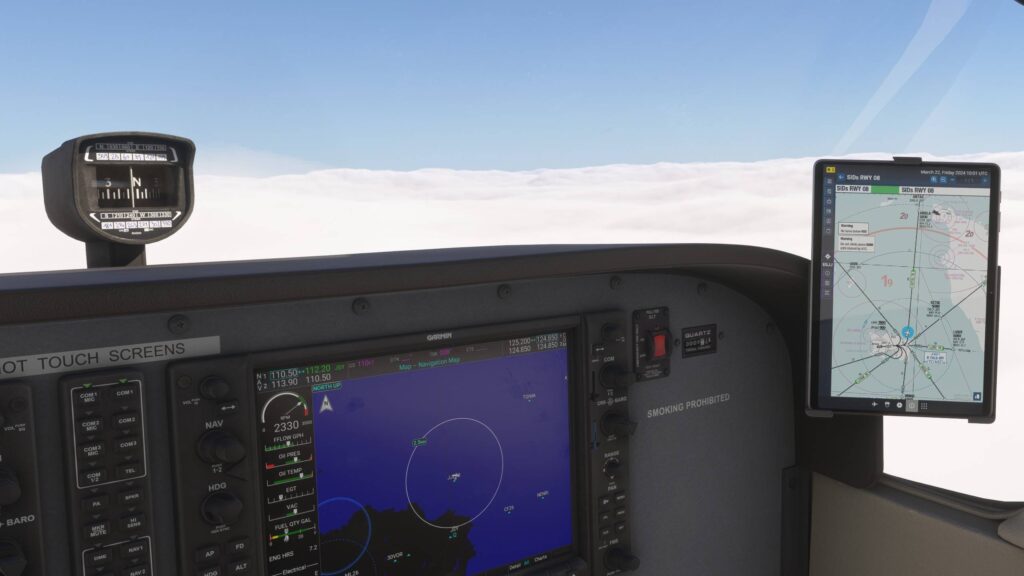
This coaching, naturally, is second to none. However, in a course otherwise designed to teach IFR procedures from nothing, the pilot is left on their own to learn how to read charts and understand where all of these procedures come from, and that’s more difficult than it sounds. The novice IFR pilot is just as likely to botch a procedure through misunderstanding of how it is constructed as they are for lack of flying skills. FSAcademy’s rationale is that they are focusing entirely on those underlying flying skills and that there are plenty of resources for learning charts already available. They excel at this teaching, and they are correct that comprehensive resources do already exist.
But It Could Be You
But with the focus on MSFS 2024, FSAcademy has a golden opportunity that has never existed in a flight simulator before: LIDO charts are available to everyone. FSAcademy could seize this opportunity to teach charts natively within the simulator, and I believe that they have proven their ability to teach better than the majority of the current resources out there. The Cessna 172 G1000 has the new MSFS 2024 EFB, and it is possible to add “applications” to that EFB – at a minimum, FSAcademy could conceivably provide their manual/chart supplement as an EFB addition as part of the package.
Now, I am not a developer, and I don’t know how difficult it would be for FSAcademy to take that step. Certainly, it’s not a small task, otherwise, I believe they would have done it. But I think FSAcademy should shoot their shot and explore the limits of what’s possible to teach charts within the simulator. Until then, I can’t call INTERCEPTOR a truly “complete” IFR course.
Conclusion
When learning IFR in the real world, it doesn’t matter how much of the Instrument Flying Handbook you read – the techniques and concepts never “click” until you get in an airplane with the coaching from your instructor. The same applies to MSFS: you can read up and watch YouTube tutorials all you want, but for instrument flying technique there is no substitute for the stellar tutelage that FSAcademy INTERCEPTOR provides.
$30 could buy you any number of stellar aircraft or scenery add-ons, so INTERCEPTOR has to provide a lot of value to justify asking that price. In my opinion, there is no substitute for a good education. If you find yourself interested in proper instrument flying technique and navigating by “old school” methods, and especially if you would like to do so in General Aviation aircraft, it is easy for me to recommend FSAcademy INTERCEPTOR.
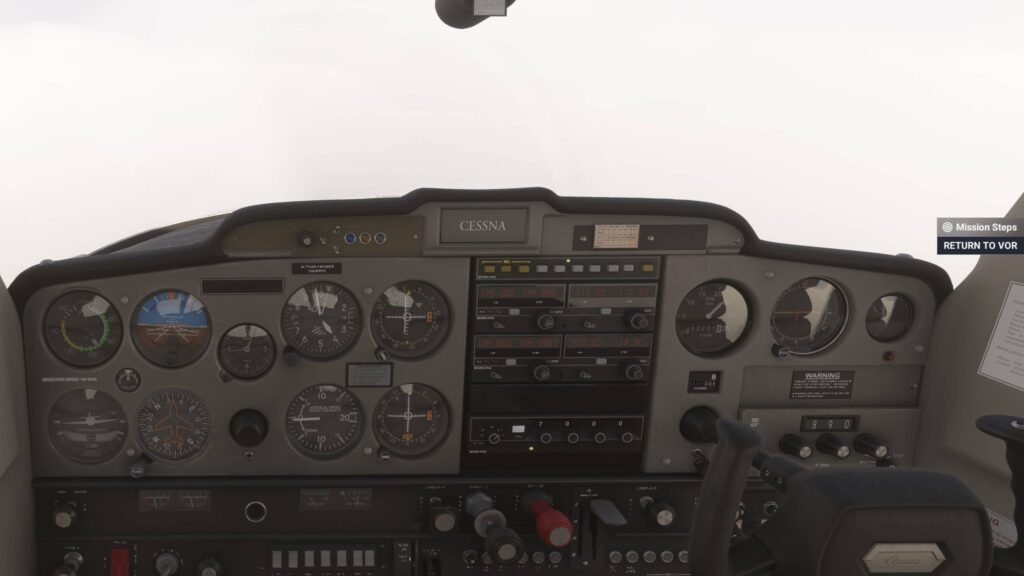

The lack of a “charts course” and no RNAV approach guidance makes it a tougher sell if modern, glassy airliners are your sim cockpit of choice. You’ll learn nothing about what Simbrief spits out or about how to translate that routing into flying – but to be very clear, the underlying skills that INTERCEPTOR teaches are universal. If a VATSIM controller asks you to “hold as published,” you may not be able to find where it’s published – but you’ll sure as heck nail the entry.
But what sticks in my mind after completing all 30 missions is just how exceptionally well FSAcademy did accomplish what they set out to achieve – as well as David’s own voice, expertise, and passion for teaching, which are clearly on display. I offer the critique in this piece not because I think INTERCEPTOR isn’t worth a buy. Instead, it is because I want to see FSAcademy bring the INTERCEPTOR-level polish and prowess to a charts course as well. If they do that, then it truly would be a complete IFR curriculum I could recommend to everyone.
Feel free to join our Discord server to share your feedback on the article, screenshots from your flights or just chat with the rest of the team and the community. Click here to join the server.

